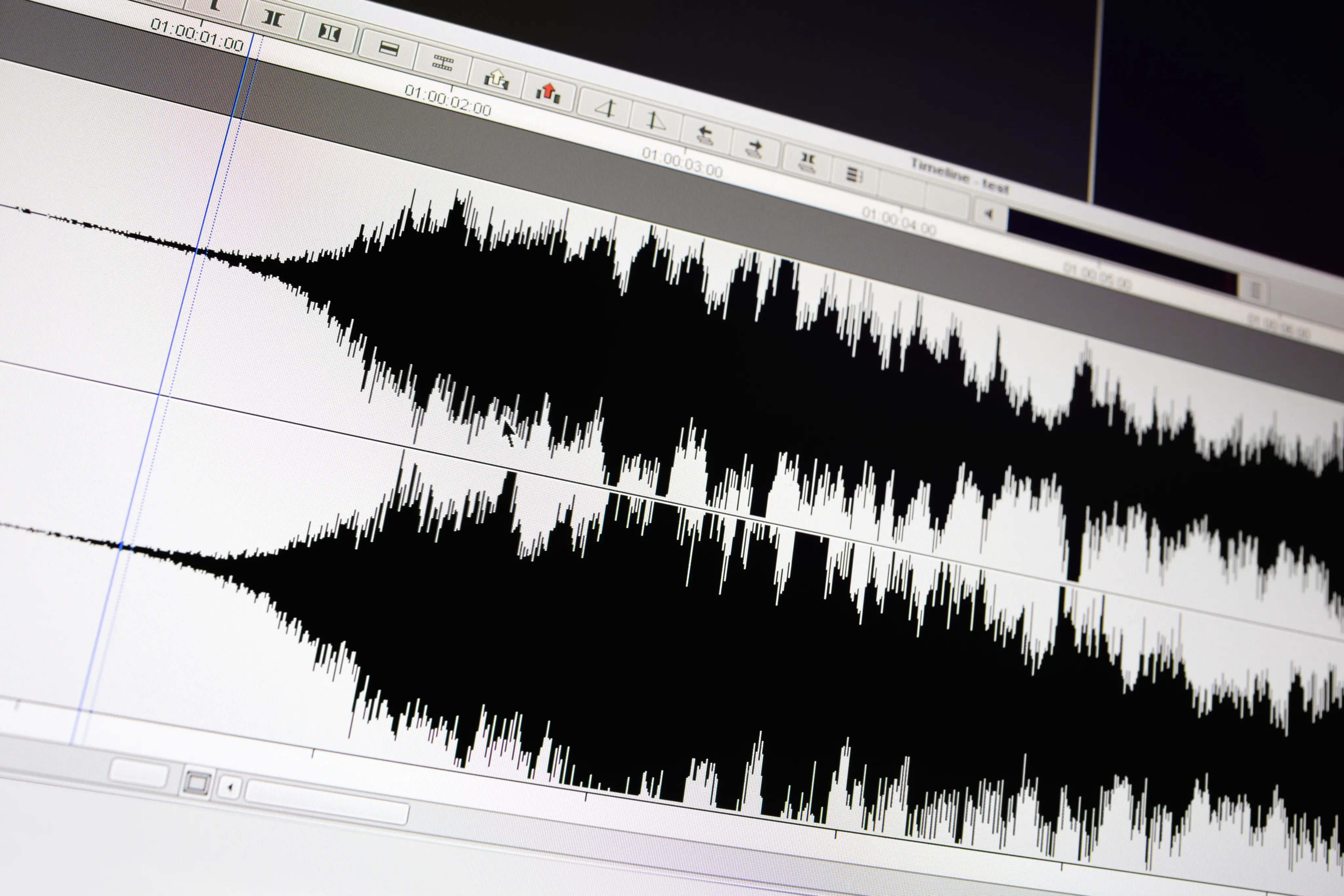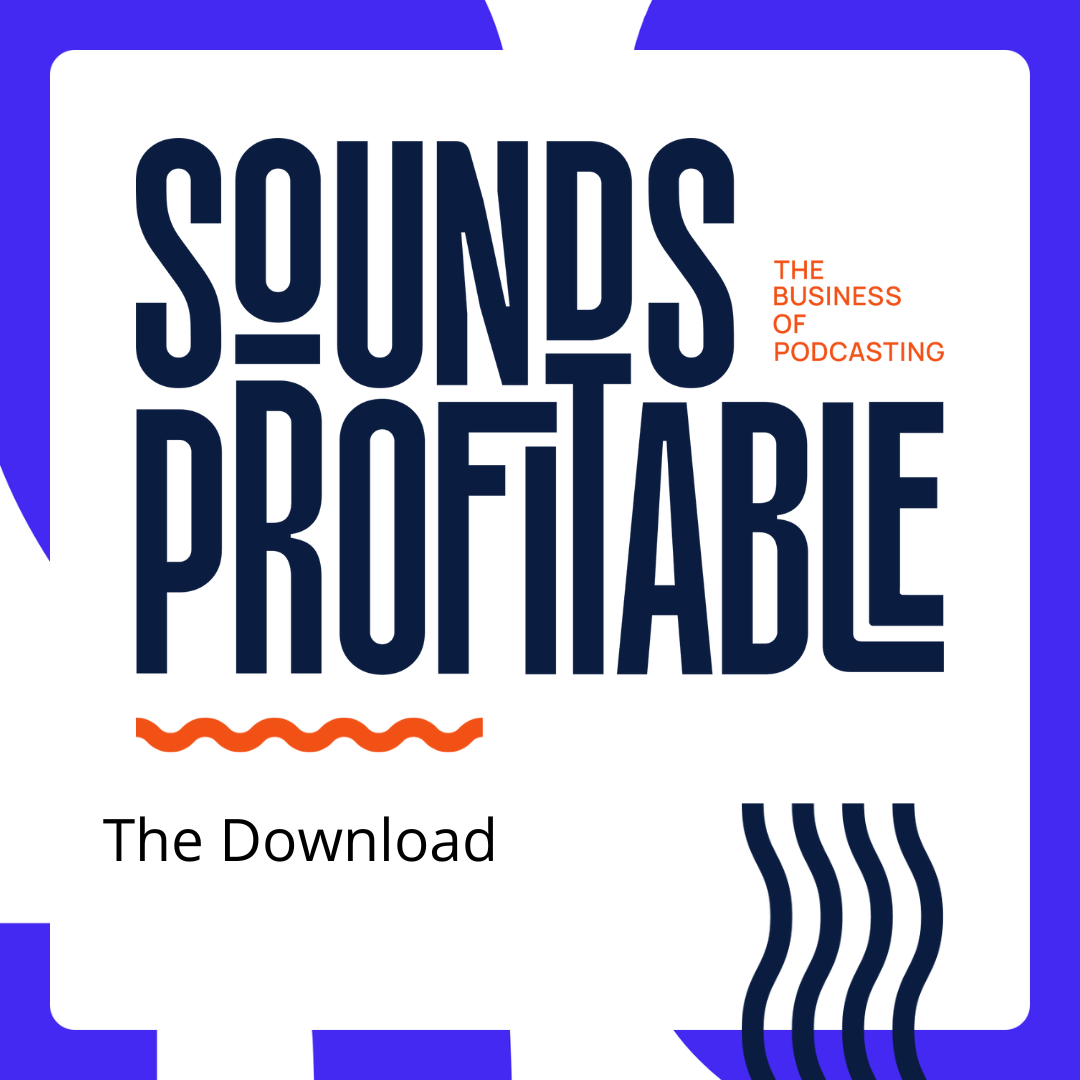Manuela: This is The Download from Sounds Profitable, the most important news from this week and why it matters to people in the business of podcasting. I’m Manuela Bedoya.
Shreya: And I’m Shreya Sharma.
Manuela: The Download is brought to you by Magellan AI. Track the trends in spend, ad load, podcasts on YouTube, and more with Magellan AI’s advertising benchmark report for Q4, available now. You can find a link in the description or visit Magellan dot AI.
Shreya: This week: CTV as a roadmap for programmatic audio, Digiday finds ad spending’s doing just fine, new health care information law passes in Washington, and a Research Roundup.
Let’s get started.
How to use CTV as a Roadmap for Programmatic Audio
Manuela: On April 19th, Magnite VP of Global Business Development Grant Sterling published an article on the Magnite blog. The piece proposes how one working with CTV can use that experience as a template for programmatic audio advertising. From Sterling’s article:
“If you were to draw a Venn diagram of CTV and programmatic audio, there’d be considerable overlap. Akin to audio, CTV media planning focuses on addressable audiences in premium environments, with private marketplace and programmatic guaranteed deals playing a large role in buying..”
Sterling highlights the fact both audio and CTV are deal-focused and have similar user experiences. CTV is good at finding audiences outside the scope of traditional media, so is audio.
When it comes to differences, audio has the advantage of more concentrated distribution channels via Spotify and Apple’s dominant share of the podcasting market. SSPs in audio find themselves positioned closer to their audiences and listening behaviors than the CTV side of the equation, as well. From the article:
“Ultimately, CTV and audio have much in common: they’re both winning greater audience share and engagement. While five years ago, these channels may have been a “nice-to-have,” they’ve both become staples of any sound marketing mix — brands simply can’t optimize their reach without them.
Looking ahead, time spent listening to audio is only expected to increase among listeners— who now represent nearly three-quarters of US internet users. To deliver on audio’s full potential, marketers can learn from CTV and heed the two channels’ differences while leaning into their similarities.”
There has been an uptick of articles like Sterling’s in previous months. Informational pieces written with the perspective that the reader has little to no experience with audio and is open to learn more. Informational and attention-getting. We would very much like to see this trend continue.
What downturn? In real terms, ad spending is doing just fine.
Shreya: On Monday a Digiday team-up of Seb Joseph, Krystal Scanlon, and Ronan Shields covered the current state of ad spend in the United States. Spoiler alert: while ad spend might not be picking up speed, the slowdown is not too bad. From the article:
“And it looks a lot more nuanced than the so-called downturn that overshadowed a lot of advertising at the back half of last year. Really, that was a precursor to a reversion to the mean (i.e. pre-pandemic levels). That’s not to say there haven’t been some real cutbacks in spending so far this year. Of course there have been. But those cuts were isolated rather than widespread.”
Google posted a constant currency ad revenue growth of 3% in Q1, while Meta saw an increase of 7% and Microsoft posted 6%. Amazon reports 23% increase year-over-year. As the article points out, ads tend to do better in close proximity to transactions. Media analyst Brian Wieser told Digiday he expects advertising will finish out 2023 with middle single-digit percentage gains, applicable to pre-pandemic levels. From the article:
“Simply put, advertising isn’t a negative market. But it is a slow one. And yet, that’s less about the economic downturn and more about the tough comparables of the year-ago quarter — when advertisers were spending at a rate that was unsustainable.”
The piece points to the advertising growth in places like Amazon, Pinterest, and TikTok in recent months as evidence of advertising industry health. From the article:
“In short, online advertising faces a headwind (this year at least), not a hurricane — as far as spending is concerned.”
And from the article’s conclusion:
“Somewhere between this reset and reversion to the mean is the cold, hard fact that online ad spending is maturing. That’s what happens when a market gets too big not to slow down. And there’s nothing inherently bad about that.”
Not the blue-sky news audio would like to hear, of course, but ad spend is doing alright. By extension, we’re doing alright, and still have plenty of room to grow.
Washington State passes sweeping health law
Manuela: Last Thursday, MarketingBrew’s Ryan Barwick posted a piece on the My Health, My Data Act being signed into law in Washington State. The new law requires “unambiguous” consent to be collected by a company before they can begin collecting health data, including location information associated with health services.
Listeners of The Download might remember back in early September when we covered a FTC case alleging data broker Kochava was collecting and selling sensitive location data that could be used to track a person’s trips to and from sensitive locations, namely reproductive healthcare facilities and places of worship. The recent Supreme Court decision on Dobbs v. Jackson, which overturned the landmark Roe vs. Wade, has added urgency in efforts to patch holes in HIPPA protections.
The 27 year-old Health Insurance Portability and Accountability Act protects personal health data collected by “covered entities,” such as doctors, health insurance companies, and dentists. HIPPA does not apply to data collected by sources outside those covered entities, such as search engines and third-party health apps. As Barwick explains, information collected from those sources can be enough to identify if an individual has insomnia, cancer – or even more short-term issues like heartburn – and advertise accordingly. Now, at least in Washington state, that will be a bit trickier.
The article interviews Amy Weston, a privacy lawyer with some healthcare and startup clients. She reports none of her clients have specifically asked about the bill or expressed concern. The majority of privacy-associated changes, if not already covered out of an abundance of caution in existing privacy agreements, can be updated easily. The real sticking point will be the potential slowdown of health data sales, as she predicts the average consumer had not realized their data was being sold and will likely opt out when notified as such.
Similar bills have been introduced in New York, Illinois, Massachusetts, and Nevada legislatures. With the increased interest and action taken on locking down forms of data not considered by legislators in 1996, it’s possible health data that’s currently common will become a rarity in the future.
Research Roundup
Shreya: For the final main story of the week, we hope you’ve saved some room for data. There’s a lot of it. In the past four days, five different reports have been published. In the interest of preventing the first ever half-hour episode of The Download, we’re going to take a lightning-round approach and hit the big highlights. Links, as always, are provided for you to go read the rest of the sweet sweet math.
First up: the Audacy State of Audio 2023. This year’s theme is “Fuel the Funnel” with a focus on audio’s ability to impact audiences at all stages of the marketing funnel. At the top level awareness stage, 49% of Us adults were impacted by audio advertising. At the consideration stage, 40% were impacted, and at the final conversion stage 45% were impacted. At the very tip of the funnel, Audacy reports audio drives 36% loyalty.
For more info on audio’s ability to drive conversions, check out the Data Decoded episode in which Tom Webster drills down on similar data from Sounds Profitable’s The Medium Moves the Message study.
Next: the Cumulus Media 2023 Audioscape. Among some of the top seven key findings, Cumulus highlights the Edison Research Share of Ear data signaling 55% of US residents aged 25 to 54 consume talk/personality content via podcasts. The same data also shows podcast listeners are more likely to be big enough fans to listen for extended periods of time. The Share of Ear data found podcast listeners average 38% more time spent listening to audio in a day than non-podcast listeners. Which comes up to just shy of six hours of audio content in a day.
The iHeart State of Podcasting 2023 reports there are now more weekly podcast listeners in the United States than Netflix subscribers. Comparing Edison Research’s Infinite Dial 2023 number of 89 million weekly podcast listeners in the US to FlixPatrol.com’s reported Netflix US subscriber base of 67 million.
Podcast Advertising Benchmark Report by Podsights for Q2 2033 estimates that they measure more than 1 in every 3 dollars spent in the podcast advertising space, given the estimated global podcast ad market value of 3 billion dollars USD.
The report opens strong with 10 billion impressions over 4,500 campaigns, a year-over-year increase of 41% and 55% respectively. Ad spend hit 790 million, a year-over-year increase of 94%.
While not specifically about podcasting, we’re ending out this segment with The Soundout Index 2023, a report on the state of sonic branding in the US. Podcasting take note: the most recognizable sonic logo, according to Soundout’s data collected from 2021 to 2023, is Hot Pockets. Expected suspects like Liberty Mutual, O’Reilly Auto Parts, and Klondike are found in the top twenty, along with Pandora at number 17. Fifteen of the top twenty sonic logos in the US have attribution over 80%.
Shreya: Finally, it’s time for our semi-regular roundup of articles we’re calling Quick Hits. These are articles that didn’t quite make the cut for today’s episode, but are still worth including in your weekend reading. This week:
- Barometer and Audiohook partner to enable Brand Suitability and Contextual Targeting at scale. The partnership aims to allow advertisers the ability to enforce brand suitability guidelines while also taking advantage of Audiohook’s programmatic platform.
- New on Data Decoded, Tom shares his love of commercial jingles while examining interesting data in the Soundout Index report. Why is sonic branding seemingly less effective on Gen Z? Find out in Tom’s new six minute video!
Manuela: And that was The Download, brought to you by Sounds Profitable! Today’s episode was built using Spooler and hosted on Art19. Find out more at Spooler.fm and Art19.com
I know we went through today’s stories fast, so be sure to check out the links to every article mentioned, right in your podcast listening app, or on SoundsProfitable.com/Podcast. And thank you for sticking with us as we bring you the top stories you might have missed from the past week. I’m Manuela Bedoya.
Shreya : And I’m Shreya Sharma. Our producers are Bryan Barletta, Gavin Gaddis, and Tom Webster. Special thanks to Art19 for hosting The Download. And thanks to you for joining us.
Robot?


 "
"


